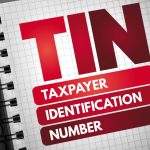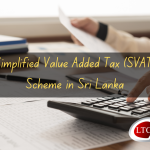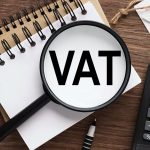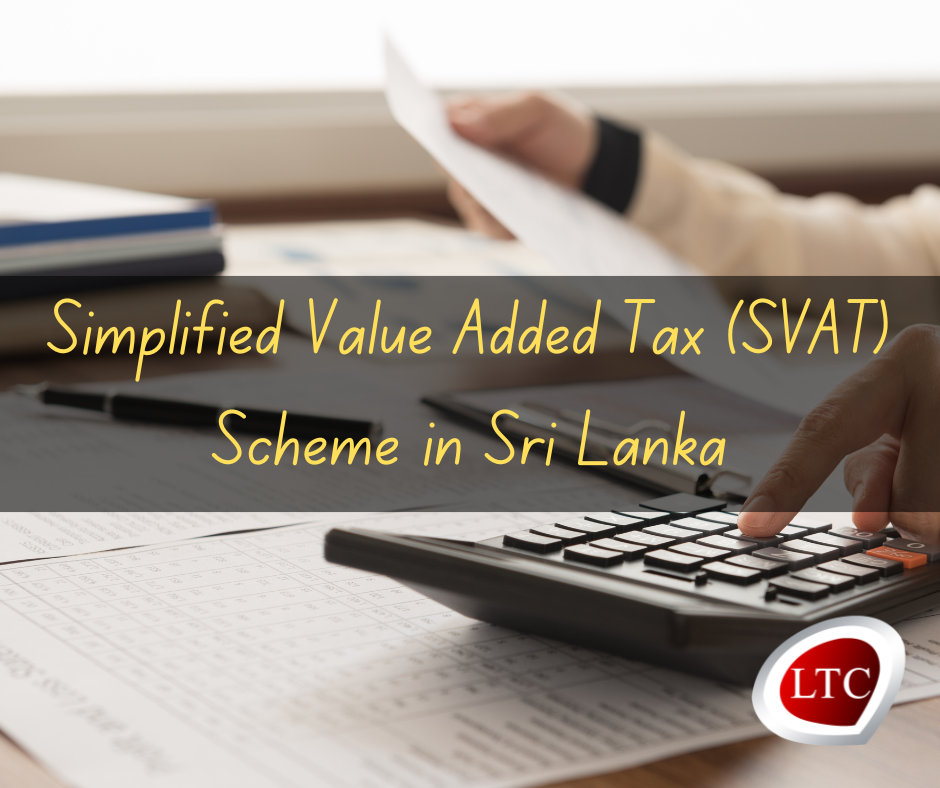Simplified Value Added Tax (SVAT) Scheme in Sri Lanka
By Kokila Mudugamuwa
The Simplified Value Added Tax (SVAT) scheme was introduced by the Department of Inland Revenue in Sri Lanka on April 1, 2011, under the Value Added Tax Act. The primary objective of SVAT is to eliminate the need for VAT refunds for eligible persons, including those making zero-rated supplies. Under this scheme, such entities are designated as Registered Identified Purchasers (RIPs). Entities supplying goods and services to RIPs are identified as Registered Identified Suppliers (RISs). VAT payments on supplies made by RIS to RIP are deferred or suspended, meaning RIS does not charge VAT to RIP.
Objectives of the SVAT Scheme:
- Address cash flow issues for exporters and suppliers to exporters, Strategic Development Projects, and specific projects.
- Reduce challenges for exporters in obtaining VAT refunds, especially those arising from overpayment of input tax.
- Decrease the workload of revenue officers involved in processing refund claims.
- Prevent fraud associated with VAT refunds.
Eligibility for SVAT Registration:
- Registered Identified Purchaser (RIP):
- Exporters or providers of zero-rated services with supplies exceeding 50% of their total supplies.
- Indirect exporters (manufacturers supplying goods to exporters for manufacturing goods for export) whose supply exceeds 50% of their total supplies.
- Suppliers to Strategic Development Projects (SDPs) during the project implementation period, where such supplies exceed 50% of total supplies.
- Entities engaged in specific projects and those registered under section 22(7), including SDPs during the project implementation period.
- Providers of value-added services to exporters, where such services exceed 50% of total supplies.
- Suppliers to the above-mentioned categories (i.e., indirect exporters).
- Registered Identified Supplier (RIS):
- Any VAT-registered person supplying goods or services to RIPs.
SVAT Process:
- Suspended Tax Invoice (SVAT 02):
- When RIS makes a supply to RIP, the invoice issued is a “Suspended Tax Invoice,” showing the VAT component as “Suspended Value Added Tax.”
- SVAT 04 and Credit Voucher:
- RIS submits details of supplies to the Inland Revenue Department (IRD) using Form SVAT 04 online. RIP approves the suspended supply and provides a credit voucher number.
VAT Computation:
- Before SVAT:
- Exporters face issues with VAT refunds due to input tax on imports and local purchases.
- After SVAT Implementation:
- RIPs do not face VAT payment/refund issues as VAT is suspended on purchases.
- RISs receive credit vouchers for supplies made to RIPs, which are used to offset VAT liabilities.
Regulations:
- The SVAT scheme is regulated under Gazette Notification No. 1986/9 dated September 27, 2016. It specifies guidelines on the operation of the SVAT scheme, including eligibility criteria, registration process, and responsibilities of RIPs and RISs.
Compliance and Penalties:
- RIS:
- Must issue suspended tax invoices and update Form SVAT 04 promptly.
- Negligence in compliance can result in penalties.
- RIP:
- Must approve Form SVAT 04 and issue credit vouchers timely.
- Failure to comply can lead to assessments or blacklisting.
This overview captures the essence of the SVAT scheme, its objectives, eligibility criteria, and operational guidelines. The scheme aims to simplify VAT processes for exporters and related entities, reducing the administrative burden and potential fraud associated with VAT refunds.











![VAT & SVAT Registration requirements for Tea, Rubber, and Coconut Suppliers – SEC/2024/E/01 [04 Jan 2023]](https://lankataxclub.lk/wp-content/uploads/2024/02/Can-Tea-Rubber-and-Coconut-Suppliers-get-SVAT-150x150.jpg)


